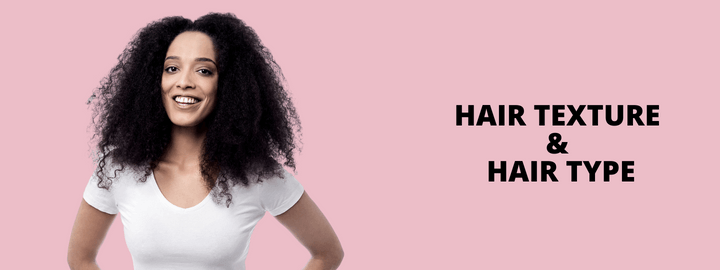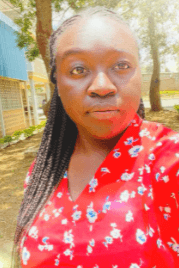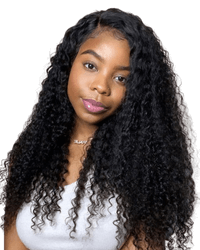Understanding hair texture and type is key to determining what hair care products to use. It is also critical for regulating your styling routines to maintain healthy natural hair.
However, the hair texture chart usually uses these two terms interchangeably. This can be confusing as they have different meanings.
In simple terms, hair texture is the diameter of individual hair strands, while hair type refers to how the hair looks.
Today, we created a complete guide to help you learn all about hair texture and hair type.
Let’s begin!
What Is Hair Texture?
Hair texture refers to the thickness or diameter of hair strands. 3 primary hair texture types are fine, medium, and thick. Here is how these hair textures differ.
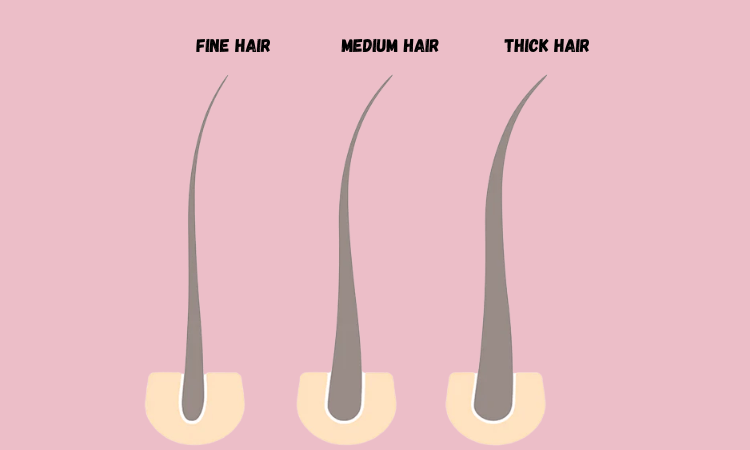
Fine Hair
Fine hair is the most delicate hair texture and can break easily. These hairs are silky smooth and are oilier than all other hair textures.
The hair is light and will tend to fall flat against the head quickly. On top of that, it needs to hold styles better and get weighed down by products more often.
Also, the individual hair shafts are thin and only have a cuticle and cortex layer. The follicles are very sparse, and you can directly see the scalp through the hair. [1]
Usually, those with fine hair tend to grow more hair than those with medium or thick hair. This is because each hair strand will only occupy a small space.
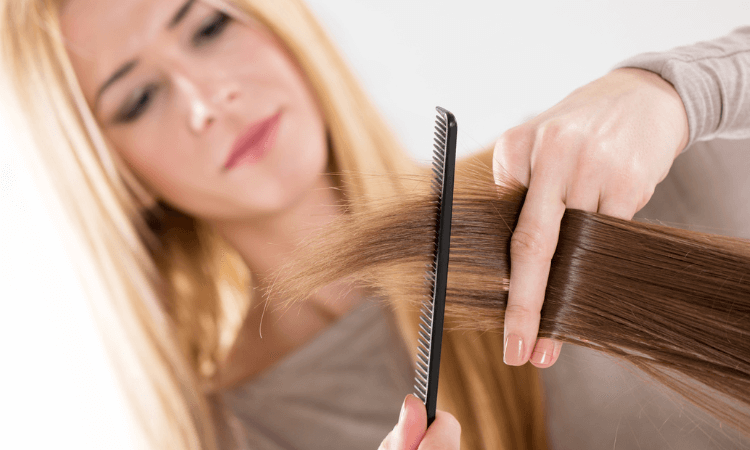
Fine Hair Care Tips
People with fine hair should avoid using products that contain heavy moisturizers. Otherwise, you risk weighing down the hair and causing breakage.
Furthermore, avoid hairstyles with long lengths as they make the hair look stringy. Also, use dry shampoo to remove excess oils and build-ups.
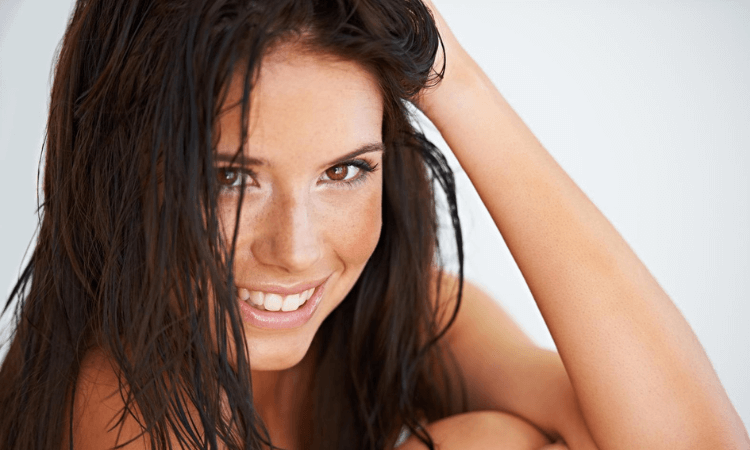
Medium Hair
Medium hair is the most common texture and is generally thicker than fine hair. The hair is not so fragile and can be easily manipulated without causing breakage.
Typically, the hair shaft consists of a layer of cuticle, cortex, and in other cases, medulla. The medulla makes the hair have a high tolerance for stress and thus can hold styles easily. [2]
Furthermore, medium hair strands are closely packed together and cover the scalp well. Creating various hairstyles is easier than it is with fine hair.
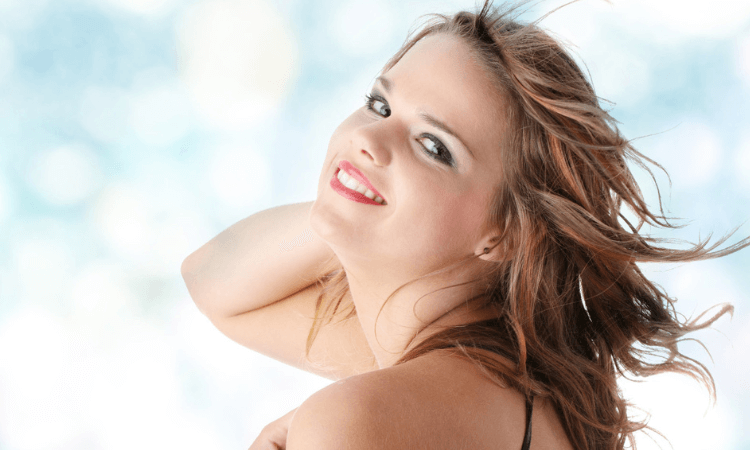
Medium Hair Care Tips
Medium hair becomes prone to damage when you overuse heat tools during styling. Ensure you avoid overusing heat tools or high temperatures to prevent the hair from drying out.
Moreover, it is essential to use moisturizing products on medium hair. Maintaining ideal moisture levels keep the hair hydrated, balanced, and nourished.

Thick Hair
Structurally, the hair shaft comprises a cortex, cuticle, and medulla layer. The medulla is mainly filled with proteins, which makes the follicles very strong. It also makes the hair more resistant to heat and breakage than fine or medium hair.
With thick hair, the follicle groupings are tight and fully cover the head. You can barely see the scalp through the hair.
This texture can hold hairstyles very well. However, the hair is hard to dry and can resist coloring or other chemical treatments. Moreover, thick hair looks dull, is the driest of the hair textures, and gets frizzy quickly.

Thick Hair Care Tips
Those with thick hair should use moisturizing shampoo every other wash day. This provides extra moisture, as this hair texture is often susceptible to dryness. Proper hydration also makes the hair easy to manage without causing breakage.
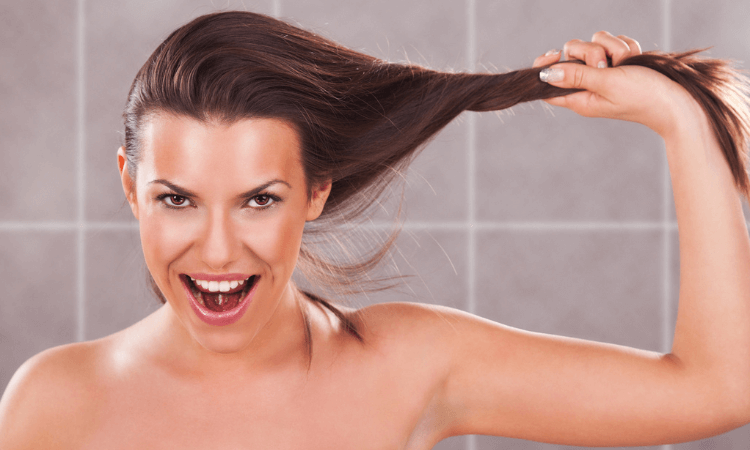
What Is Hair Type?
Hair type is how the hair looks, whether straight, wavy, curly, or coily. However, these 4 basic hair types have various subcategories. Here is a simple classification of hair types.
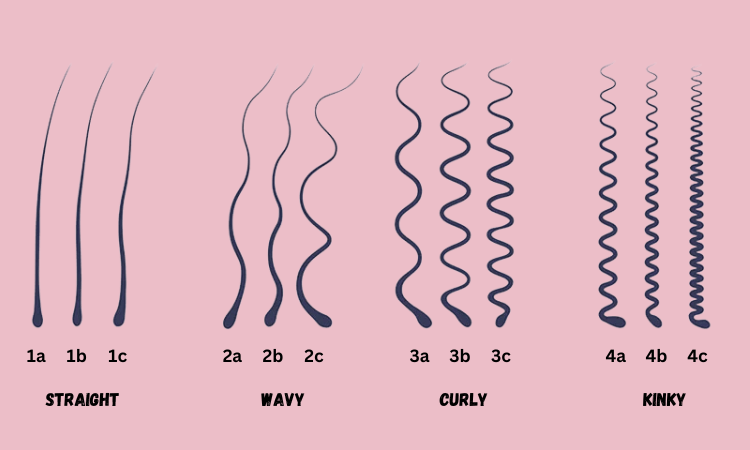
Straight (Type 1)
This hair type is naturally straight and lies flat on the scalp. Since the hair lacks curls, it can quickly get oily as oil from the scalp will flow freely down to the tips of the strands.
Straight hair is strong, holds styles well, and is resistant to heat. Moreover, it reflects light easily due to its shiny appearance.
Type 1A
Type 1A hair is very straight, fine, and lacks any form of definitive curl. As the hair is straight, it tends to look oily since oils from the scalp travel to the ends easily.
Type 1B
Type 1B hair is still very straight but has a medium texture and more volume than Type 1A. It is not so fragile and can hold styles well.
Type 1C
Type 1C hair is straight and typically thick. The hair is more resilient to stress but can be hard to style because it has a lot of volumes. Also, it is more prone to frizz, especially in humid weather.

Straight Hair Care Tips
People with straight hair should wash it regularly to avoid an oily look. Consider washing with gentle products to unclog the hair follicles on the scalp.
I recommend washing the hair 2 times every week to remove oil build-up for healthy hair. Again, you should low-shine products as the hair already has a natural glossiness.
Wavy (Type 2)
The type 2 hair type is naturally wavy and tends to have an S shape. It falls between straight and curly hair. Though some wavy hair might be straight but form slight bends toward the tips of the strands.
This hair is thicker and is not as oily as Type 1 due to its slight shape and texture. It can frizz quickly and needs more attention to achieve perfect styles.
Type 2A
Type 2A hair is fine and thin or a little thicker. The individual strands form an S shape when the hair is dry. Moreover, it is easy to straighten or curl using styling products.
Type 2B
Type 2B hair is wavy and has medium thickness. Its strands have an S shape but are frizzier than Type 2A even.
Type 2C
Type 2C hair has waves starting from the scalp and is very thick. It is the most prone to frizz and very hard to style.
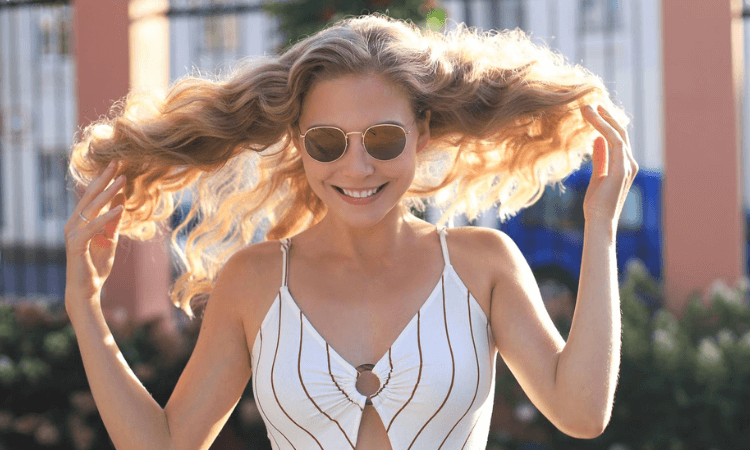
Wavy Hair Care Tips
Due to its slight shape and texture, it is not very oily so you can use dry shampoos for cleansing. This will be effective in removing build-ups and residues if any.
Additionally, avoid oil-based and creamy products to prevent weighing down the hair. But you can concentrate more on conditioning to maintain the natural waves.
Curly (Type 3)
Curly hair has distinct curls, ones that are more noticeable than wavy. This type is primarily classified as spiral or springy, as the curls go the entire length of the hair shaft. Also, this type of hair may get straight while wet, but it becomes curly once it dries up.
However, Type 3 hairs are more prone to shrinkage, frizz, tangles, and dryness. While curly hair is thick, it does not generate a lot of oil build-ups like Type 1 and Type 2 hair.
Type 3A
Type 3A hair is thick and glossy, with loose curls. It can get frizzy but is easy to define without using hair products.
Type 3B
Type 3B hair has tight, springy curls and can have a medium hair texture. Just like Type 3A, it tends to be frizzy.
Type 3C
Type 3C hair has thick and tight curls that look more like kinks. It usually has a lot of texture and can be hard to style.
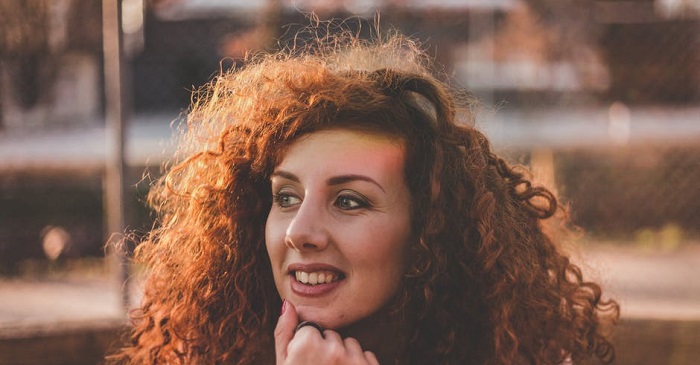
Curly Hair Care Tips
If you have type 3 hair, you should minimize chemical hair treatments and the usage of hot styling tools. These can damage the cuticle layer or even cause the hair to dry out.
Also, consider using sulfate-free shampoos to avoid stripping natural oil and moisture.
Coily/Kinky (Type 4)
Type 4 hair is coily or kinky with very tight curls and ranges from fine to thick or wiry. The strands are z-shaped or s-shaped from the scalp to the tips of the hair.
Kinky hair has significant shrinkage, frizz, and sensitivity. It is the most delicate of the types and prone to breakage. Typically, a constant issue is dryness and achieving a perfect curl definition.
Type 4A
Type 4A hair is fine with dense, springy, and well-defined curls. It has S-patterned coils, and the hair shrinks a lot when wet.
Type 4B
Type 4B hair has densely packed and less defined curls. It has Z-patterned coils, and the hair strands may be fine or thick. Also, this hair type shrinks more than type 4A when wet.
Type 4C
Type 4C hair has tightly packed Z-patterned coils. The strands experience more shrinkage and less definition than all other hair types.
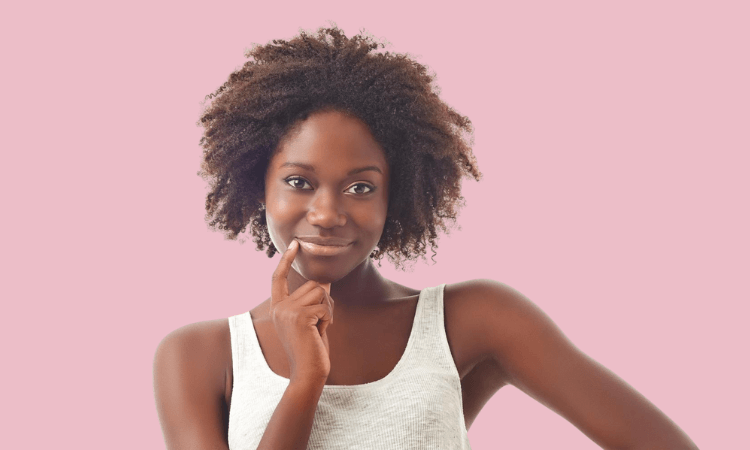
Coily Hair Care Tips
Moisturizing kinky hair is crucial since it is easily dehydrated and prone to damage. You should oil the hair before shampooing to help maintain its natural oils.
Moreover, use leave-in moisturizer or conditioner to minimize breakage. Furthermore, avoid using heat tools as they may cause dryness and split ends.
Other Care Tips for Hair Texture and Hair Type
Everyone needs to maintain and grow healthy hair despite their hair texture and type. Here are some hair care tips to keep your hair strands strong and healthy.
Heat Protectant
Applying a heat protectant when using a dryer or flat iron is essential. The thermal heat-protective spray protects hair from heat damage, especially for color-treated hair.
Also, consider applying a formula with UV heat protection. This will help in protecting the hair against damage caused by the sun.
Hair Trim
Consider trimming your hair regularly to get rid of split ends. Hairs with split ends will continue splitting up the shaft, thus causing more damage.
I recommend trimming the hair every 6 – 8 weeks to maintain healthy hair. Ensure you trim split ends above the point of the split; otherwise, the strand will continue to break.

Layered Hairstyles
Layered hairstyles are great for all hair textures and types. They make the hair appear less flat, more voluminous, and bouncy. This technique makes it easy to complement and fix exaggerated facial features.
Adding layers reduces weight to relieve strand stress if your hair is fine or medium. But if the hair is thick, layers keep it evenly styled.
Oil Massage
An oil massage at least once a week is ideal for providing the hair with nutrients and hydration. It works well on hair prone to split ends, is frizzy, color-treated, or very dry.
To massage your hair, mix an essential oil with your preferred carrier oil and warm the mixture. Then apply the oil on your scalp and massage gently for about 5 – 10 minutes.
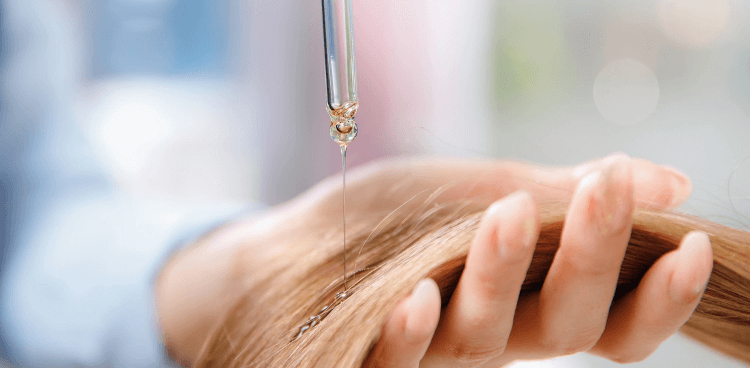
Hair Mask
A hair mask is a deep moisturizing treatment for people with very dry and damaged hair. It offers a solution for hydrating, nourishing, and improving hair health. Moreover, hair masks can help repair damage from color treatments or heat styling.
It would help if you did a hair mask 2 – 3 times a week for very dry hair, but for oily hair, once a week is okay.
Silk Pillowcase
Sleeping on a silk pillowcase decreases friction, especially for curly and coily hair. Unlike cotton pillows, it prevents the hair from tangling and breaking when sleeping. On top of that, silk helps maintain the hair’s moisture so it does not dry out overnight.
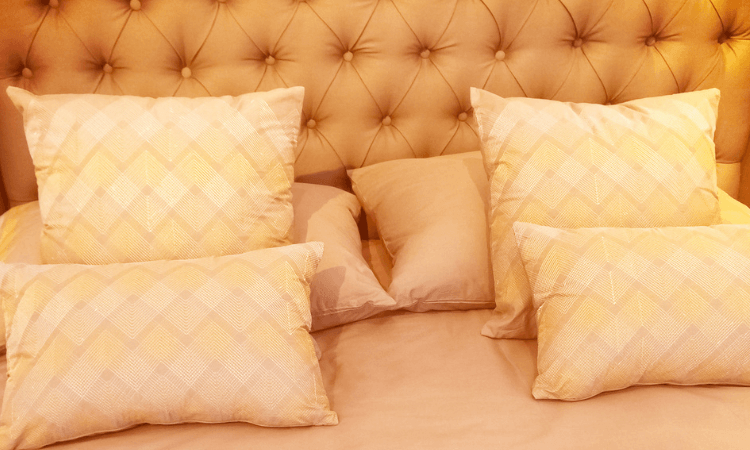
Texturizing Spray
Hair texturizing spray adds volume and texture to your hair. They provide lift for updo styles and give a long-lasting hold to wavy or curly hair.
These sprays create definition and absorb extra oil from greasy hair. They are often ideal for fine and straight hair, but anyone can apply them.

FAQs About Hair Textures and Hair Types
Can You Change Your Hair Texture?
It is almost impossible to change your hair texture as it is up to the DNA in the hair follicles. Hair type is something people are born with, and you can only notice changes the more the follicles grow. However, you can change how it looks by curling, straightening, or braiding the hair.
Can You Have More Than One Hair Type?
The answer is Yes! Having more than one hair type or curl pattern is normal. The most common explanation for this would be genetics. For instance, a biracial individual can inherit hair type characteristics from each parent.
Apart from genetics, other factors such as humidity or weather can play a role in your hair type. But the result is just temporary.
What Hair Color Is Thickest
The darker the hair, the thicker it will be, but it has a lower density. Light hair, like blond hair, is fine textured but has a higher hair density. For example, Asians usually grow the darkest hair, but their hair density is very low.
What Is the 5th Hair Type?
The 5th hair type is very curly with S-pattern coils when stretched but forms tight coils when not stretched. The hair may be dense or thick and has no defined curl pattern. Additionally, the hair might require chemical treatment to loosen up its curls.
Final Thoughts
Now you have an informed understanding of hair texture and hair type. So, how do you determine your hair texture? Let us know in the comments below!


